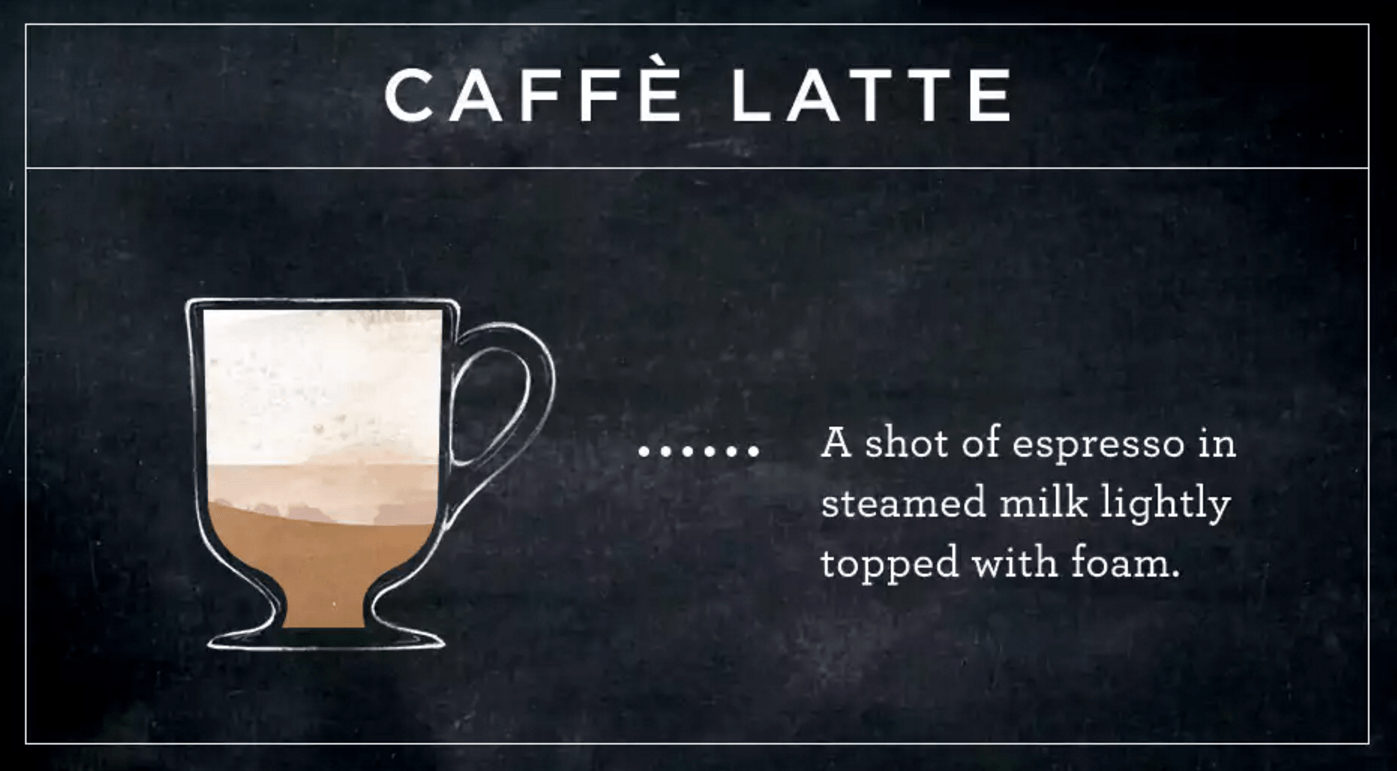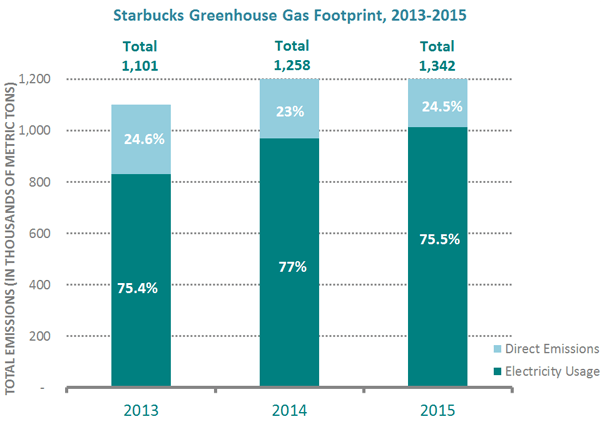Starbucks: Jack and the sustainable bean-stock

Global warming is putting real pressure on coffee production – so Starbucks, the largest coffee retailer, is taking steps to adapt and curb its contributions to climate change.
What could be worse than the rosé shortage of Summer 2014? Answer: A coffee shortage.
While most of my knowledge on coffee stems from consumption (yes, I love pumpkin spice lattes), research supports that climate change poses a significant risk to coffee production around the world (potentially as large as a 50% decline by 2050). Specifically, global warming reduces coffee crop yields by promoting unpredictable precipitation, bug infestations, and land erosion. While some suggest that global warming will cause other regions to become more suitable for coffee production, this mitigation potential is limited.[i]

Source: http://www.starbucks.com/coffee/espresso/latte-beverages
Starbucks’ business model, with its supply chain entirely dependent on the Arabica coffee bean, is highly vulnerable to variations in coffee supply and the resulting fluctuations in coffee prices. As noted within the company’s filings, “The supply and price of coffee we purchase can be affected by…weather, natural disasters, crop disease, [and] general increase in farm inputs and costs of production.”[ii] Climate change impacts all of these factors and to hedge against these risks, Starbucks is focusing on sustainable farming methods, greenhouse gas (GHG) emission management, and use of renewable energy – a strategy pursued since 2004.[iii] But are these initiatives working and is the company going far enough?
Adapting to climate change: conservation in coordination with farmers
Starbucks works closely with its farmers to not only ensure that crops are maintained according sustainability standards (99% of Starbucks beans are ethically sourced), but also to understand crop yield issues arising from climate change.
Source: YouTube – Starbucks + Conservation International
In 2013, to help farmers adapt to the lower yields they were experiencing due to global warming, Starbucks purchased a coffee farm in Costa Rica to test various growing practices. These tests helped develop seeds that perform better in warmer climates and are disease resistant. This strategy was particularly impactful in 2014 in Mexico – early in the year, farmers lost 60% of their crop due to rising temperatures (and the resulting leaf rust). As a result of the research conducted by Starbucks, the company was able to distribute rust-resistant seeds to help support these farmers and their future crop production.[iv]
Starbucks is focused on supporting the livelihood of its farmers/partners, maintaining production, and ensuring access to coffee at a reasonable price. These initiatives position Starbucks to maintain its dominance in the coffee market, despite the risks posed by global warming.
Is Starbucks going far enough? Is it actually reducing its emission footprint to curb global warming?
While Starbucks has been making headway on farming sustainability, I believe more must be done to reduce the company’s contribution to the problem itself. While all stores build to LEED standards, the company’s GHG emission trajectory is heading in the wrong direction.
Starbucks notes that this increase in volume is due to “… net store growth, and…the addition of heated food to our menu [that] has required an increase in refrigeration and ovens”. [v]
While the reasoning above may serve as a short term excuse, the company should be focused on reducing its GHG emission volume over the next few years. There is a lot that can be done downstream (focused on store operations). While hot foods may add to profitability, where might stores be able to further improve their electricity efficiency to offset the increase in GHG emission? Additionally, Starbucks cups contain 10% recycled paper[vi], which is an excellent start, but these cups are not fully recyclable/compostable (contain plastic). Note: all cups and lids served in HBS Spangler dining are compostable (source: Will Booth, waste management expert). Starbucks should support R&D initiatives to change the composition of their cups/lids to be compostable. Finally, the company could also promote sustainability initiatives among its customers. Currently, there is a $0.10 discount for bringing in your own cup.[vii] The company could go further by: increasing the discount, “charging” for cups (prospect theory), expanding to discount to “for here” cups, etc. These suggestions only scratch the surface of opportunities for Starbucks to reduce its GHG emission and curb its contribution to the problem at hand.
I believe Starbucks can do more to adapt to and curb its contribution to climate change, but I am encouraged by the work the company has done with farmers and I am optimistic about their ability to decrease future GHG emission volumes. One thing is for sure, I don’t want to live in a world without my morning coffee.
(779 words)
[i] Bunn, C., Läderach, P., Ovalle Rivera, O., “A bitter cup: climate change profile of global production of Arabica and Robusta coffee,” Climate Change, 2015, 129: 89.
[ii] Starbucks Corporation, September 27, 2015 Form 10-K [https://www.sec.gov/Archives/edgar/data/829224/000082922415000038/sbux-9272015x10k.htm] accessed November 2016.
[iii] http://www.starbucks.com/responsibility/environment/climate-change
[iv] Byrnes, Nanette, “Starbucks Responds to Climate Change, with Mixed Results” MIT Technology Review, May 9, 2016.
[v] http://www.starbucks.com/responsibility/environment/climate-change
[vi] http://www.starbucks.com/responsibility/environment/cups-and-materials
[vii] https://customerservice.starbucks.com/app/answers/detail/a_id/2463




Awesome post! I think you rightly distinguish between the impact that climate change has on Starbucks inputs – the coffee supply – but also what is being done at the store level to reduce GHG emissions. Has Starbucks stated why they don’t have fully recyclable or compostable cups? This seems to be low-hanging fruit…
Could you imagine if there was a rose shortage?! Seriously great post– I think you do a great job highlighting how Starbucks is making strides to create more sustainable coffee production, but also address the fact that Starbucks continues to increase its footprint in GHG emissions. I can’t help but wonder if Starbucks is helping the coffee supply chain purely on self-serving interests or because they really care about the environment. Given their lack of commitment to address GHG emissions, it makes me cautious to trust their motives.
You’ve come up with some creative ideas related to other ways Starbucks can contribute to sustainable efforts. Like the poster above, many of your suggestions seem like low-hanging fruit. I wonder if Starbucks has considered some of these options and if so, why they haven’t pursued any of them.